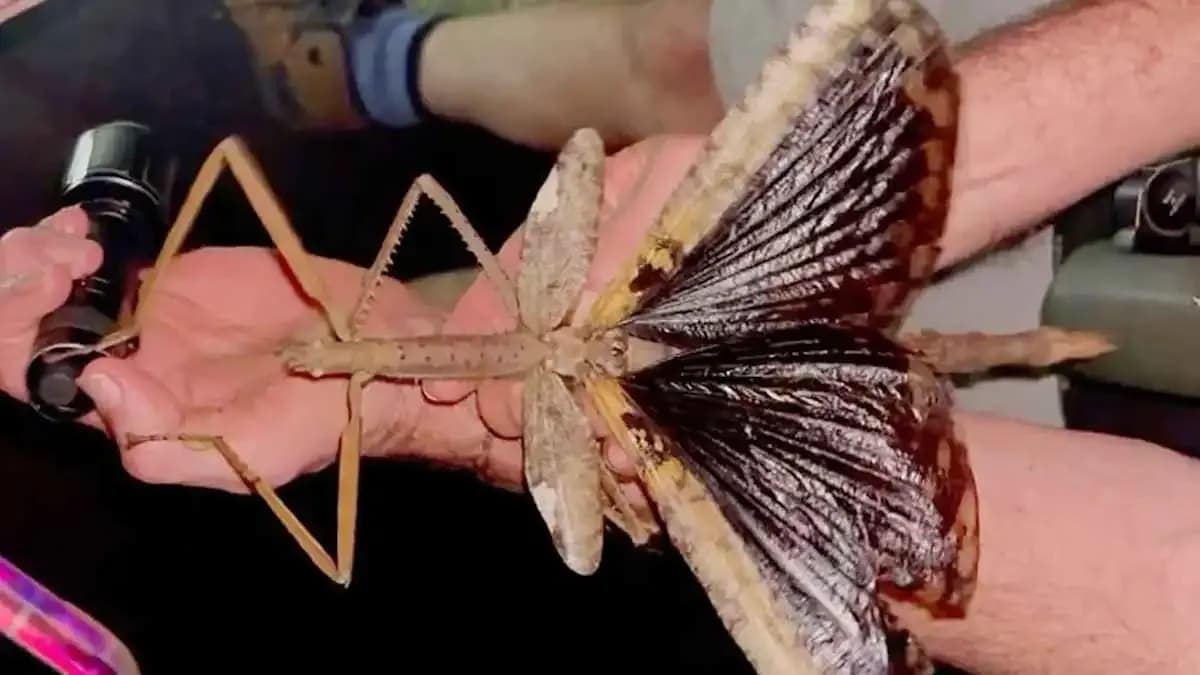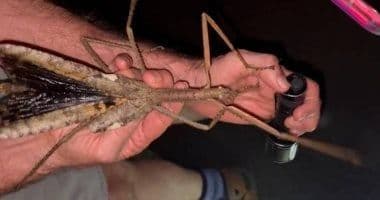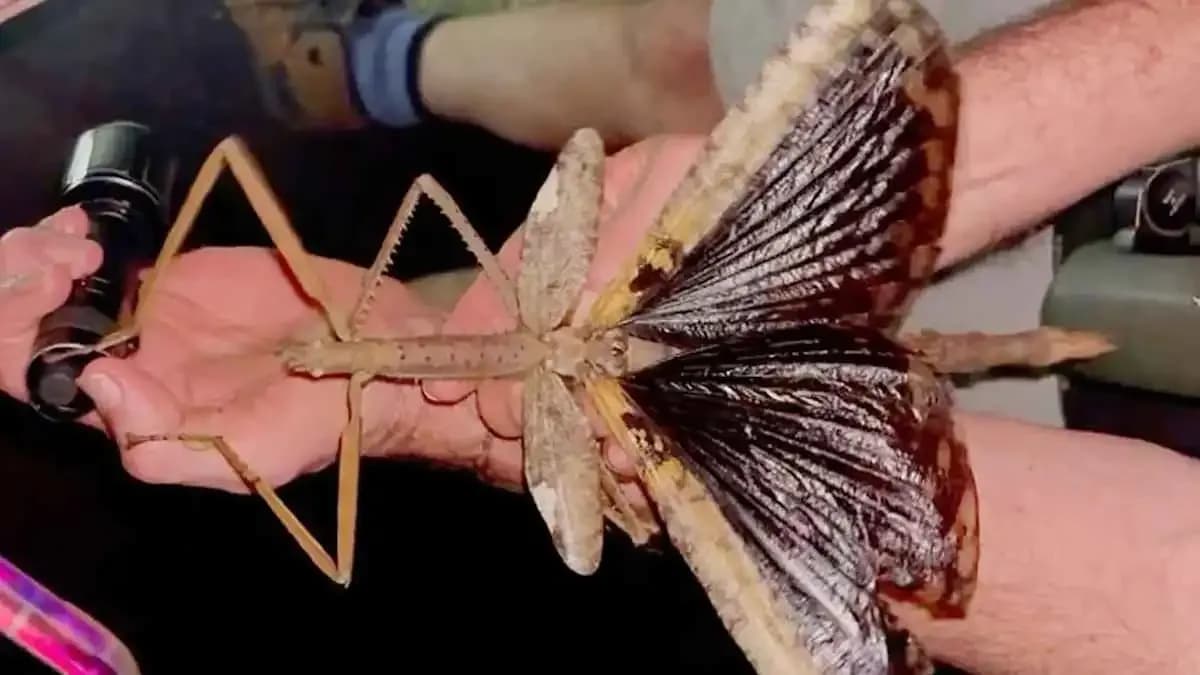Breaking the Mold: Australia's New Stick Insect King and the Puzzles of Gigantism
Discover Australia's latest biological marvel: a colossal stick insect rewriting records. Uncover the evolutionary secrets behind its immense size & the continent's hidden insect giants.
The Unveiling of a Colossus: A Record-Breaking Discovery
Australia, a continent synonymous with unique and often enormous wildlife, has once again captured the world's attention with the recent unveiling of a truly colossal stick insect. This newly identified species, a magnificent wandelende tak (walking stick insect), measures an astonishing 40 centimeters in length and weighs a hefty 44 grams, immediately positioning it as a strong contender for Australia's heaviest insect. Its sheer scale challenges our perceptions of what an insect can be, pushing the boundaries of known entomological dimensions. This discovery isn't just a fascinating anecdote; it's a profound moment for science, highlighting the incredible biodiversity still hidden within Australia's vast and often unexplored landscapes. Imagine encountering a creature of this size, perfectly camouflaged, blending seamlessly into its arboreal home. It’s a testament to nature's ingenuity and a thrilling reminder of the wonders that still await discovery in our natural world.
Masters of Disguise: Beyond the Art of Camouflage
Stick insects are renowned for their unparalleled mastery of crypsis, seamlessly mimicking branches, twigs, or leaves to evade detection. But how does this principle apply when an insect reaches the dimensions of a small tree branch itself? For this new Australian giant, its impressive size doesn't necessarily hinder its camouflage; rather, it transforms it. Instead of disappearing into the background, it becomes an indistinguishable part of the foreground, a seemingly inert piece of the forest architecture. The sheer bulk and intricate texture of its body make it appear as an actual woody growth, rendering it invisible in plain sight. Observing footage of this creature spreading its wings offers a glimpse into another layer of its defense, perhaps a startle display to deter predators or an unexpected aerial escape, further complicating the traditional understanding of how such large insects navigate their world and avoid becoming a meal.
Why So Big? The Evolutionary Edge of Giant Phasmids
The question of why certain insects, like this newly discovered stick insect, evolve to such prodigious sizes is a captivating puzzle for evolutionary biologists. of offers a compelling insight, suggesting that the sheer body mass of these giants likely aids their survival, particularly in colder conditions. This increased mass could provide better thermal regulation, allowing them to retain heat more effectively than their smaller counterparts, especially during cooler nights or in less temperate environments. Beyond thermoregulation, gigantism in phasmids can confer several other advantages. Larger size can deter a wider range of predators, make them more dominant in competition for mates or resources, and potentially even allow for longer lifespans or greater reproductive output. It's a complex interplay of environmental pressures, resource availability, and the absence of strong limiting factors that allows these magnificent creatures to push the boundaries of insect scale.
Australia's Hidden World: A Continent Teeming with Unseen Giants
The discovery of such a significant new species in serves as a powerful reminder that despite extensive research, our planet's biodiversity remains largely uncharted, particularly in remote and ecologically diverse regions. Australia, with its ancient landscapes, unique evolutionary history, and vast stretches of untouched wilderness, is a prime example of a continent that continues to yield incredible biological surprises. The existence of a 40-centimeter insect, previously unknown to science, underscores the notion that countless other species, perhaps even more giants, are still waiting to be found within its dense rainforests, arid outback, and alpine regions. This ongoing unveiling of new life forms emphasizes the incredible richness of Australian ecosystems and the critical importance of continued exploration and ecological preservation. It truly is a hidden world, constantly revealing its secrets to those who dare to look closer.
The Future of Phasmids: Conservation, Research, and Unanswered Questions
The discovery of potential new stick insect king isn't merely a headline; it's a catalyst for deeper scientific inquiry and a renewed call for conservation. Each new species identified provides invaluable data points for understanding evolutionary pathways, ecological relationships, and the overall health of an ecosystem. For phasmids, this giant offers a unique opportunity to study the physiological limits of insect size, their specific adaptations to their environment, and their role within the broader food web. As habitats face increasing pressures from climate change and human activity, understanding these creatures becomes paramount. What are their specific habitat requirements? How vulnerable are they to environmental shifts? Protecting these magnificent, often overlooked insects and their habitats is crucial, not just for their survival, but for the health of the entire planet. This discovery leaves us with more questions than answers, fueling the ongoing quest to unravel nature's mysteries.
Related Articles

Beyond the Visible: The Giant Stick Insect's Revelation from Australia's Untamed Canopy

Beyond the Visible: The Giant Stick Insect's Revelation from Australia's Untamed Canopy

The Whisper of the Wild: Unearthing Australia's Elusive Giant Insects

The Whisper of the Wild: Unearthing Australia's Elusive Giant Insects

Guardians of the Canopy: Unveiling Australia's Rainforest Leviathan

Guardians of the Canopy: Unveiling Australia's Rainforest Leviathan

Nature's Grand Paradox: Unearthing the Corpse Flower's Alluring Rottenness
